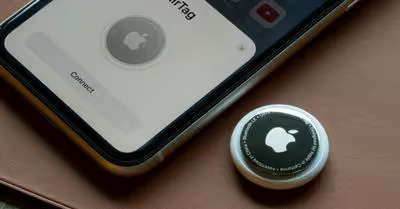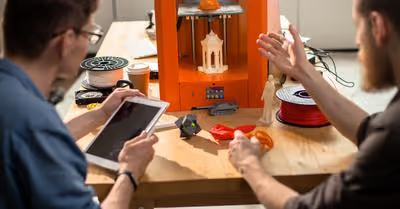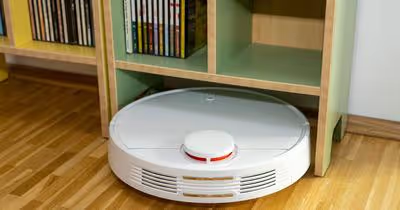Table of Contents
What Are PS4 USB Ports?
The PlayStation 4 has two USB 3.0 ports located on the front of the console. You can use these ports to connect a variety of accessories, including external hard drives, controllers, storage devices, and headsets.
USB 3.0 is a high-speed interface that allows for faster data transfer rates than older USB standards. It's also backward compatible with older devices, so you can still use your old USB 2.0 peripherals with the PS4.
In addition to the standard USB ports, the PS4 also has an additional port that is used for connecting the PlayStation Camera. This proprietary port is not compatible with any other devices.
Lastly, there's a small port on the back of the console that's used for connecting the PlayStation VR headset. This port is also not compatible with any other devices.
As you can see, the PS4 has a variety of different ports that are used for different purposes. Knowing which port to use for each device can help you get the most out of your console.
PS4 USB Port Basic Features
Let's take a look at some of the basic features of the PS4 USB ports:
USB 3.0/3.1 Generation 1
The USB 3.0/3.1 Generation 1 standard was released in 2008 and is the successor to the USB 2.0 standard. It offers increased data transfer speeds of up to 5Gbps and is backward compatible with older USB standards. It is also capable of supplying more power to devices, up to 2.5 watts compared to the 2 watts of USB 2.0. The higher data transfer rate and increased power supply make USB 3.0/3.1 ideal for use with external hard drives, video cameras, and other high-end devices.
Bi-Directional Data Transfer
One of the great things about USB is that it allows for bi-directional data transfer. This means that you can not only connect an external hard drive to your PS4, but you can also use it to back up data from your PS4 to the hard drive. This is a great way to free up space on your PS4, and it's also a good way to keep a backup of your game data in case something happens to your console.
Power-Saving Mode
When not in use, the PS4 USB ports will enter a power-saving mode. This means that they will stop supplying power to devices that are connected to them. This is a great feature if you're worried about accidentally leaving your external hard drive or other device plugged in and draining the battery.
Now that we've covered some of the basic features of the PS4 USB ports let's take a look at how to connect an external hard drive to your PS4.
How To Connect An External Hard Drive To Your PS4
Now that we've gone over some of the basics let's get into how to actually connect an external hard drive to your PS4 for extra storage.
Step One: Choose The Right External Hard Drive
The first step is to choose the right external hard drive. There are a few things you'll want to keep in mind when making your selection:
Capacity: The capacity of an external hard drive is measured in gigabytes (GB). One GB is equal to one billion bytes. Most games take up around 50GB of storage space, so if you plan on playing a lot of games, you'll want to get an external hard drive with a large capacity. We recommend getting an external hard drive with at least 500GB of storage space.
Speed: The speed of an external hard drive is measured in revolutions per minute (RPM). The higher the RPM, the faster the hard drive will be. For gaming, we recommend getting an external hard drive with a speed of at least 7000 RPM.
Connectivity: The PS4 has two types of USB ports, so you'll want to make sure that your external hard drive is compatible with the port you're using. Choose a hard drive that supports USB 3.0/3.1 for the best performance.
Once you've selected the right external hard drive, it's time to move on to the next step.
Step Two: FormatThe External Hard Drive
The next step is to prepare the external hard drive for use with your PS4 by formatting it. This will erase all of the data on the drive, so be sure to back up any files you want to keep before proceeding. You need to format your external hard drive to exFAT in order to use it with your PS4.
You can format an external hard drive on PS4 to exFAT in two ways: from the Settings menu or from the Notification Center. To format from the Settings menu, go to 'Devices'and click on ‘USB Storage Devices.' Select your external hard drive, then proceed to 'Format as Extended Storage.' To format from the Notification Center, connect your external hard drive to your PS4. A notification will appear in the top-right corner of the screen; select it and press "Format as Extended Storage." Your external hard drive is now formatted for use with your PS4.
Step Three: Transfer PS4 Data To External Hard Drive
Now that your external hard drive is ready to go, it's time to start transferring data from your PS4 to the hard drive.
First, connect your external hard drive to one of the USB ports on your PS4™ system. Next, go to settings and find Application Saved Data Management. From there, save the data in system Storage. Then, select Copy to Extended Storage. Finally, select the specific saved data you want to copy and select Copy.
Depending on the amount of data you're copying and the speed of your external hard drive, this process may take a while. Once it's finished, you'll be able to access your saved data from extended storage on your PS4™ system just as you would from system storage.
Step Four: Select Location For Installed Games
The final step is to select a location for your installed games. By default, PS$ stores all-new games you install on the internal hard drive. If you want to install games on your external hard drive, you must first change the default location.
You can also move existing games from your PS4's internal hard drive to extended storage by going to Settings. Then click on Application Saved Data Management and select the game you want to move. Select Copy and then choose Extended Storage as the destination for the copy operation.
Step Five: Disconnecting Your PS4 External Drive Safely
When you're finished using your external hard drive, it's important to disconnect it from your PSI properly to avoid damaging the drive or losing any data. First, go to the Settings menu and find "Devices." Then go to USB Storage Devices and select Stop Using Extended Storage. This will safely eject your external hard drive from your PS4 system. Next, unplug the USB cable from your PS4 and then unplug it from the external hard drive. You can now safely store your external hard drive until you're ready to use it again.
Recent Articles

















